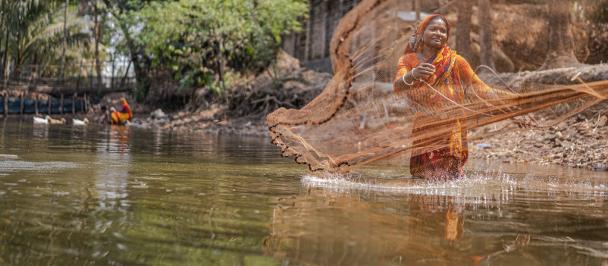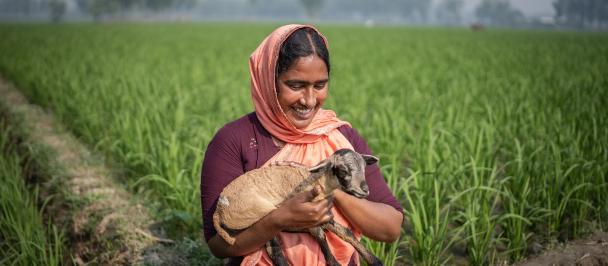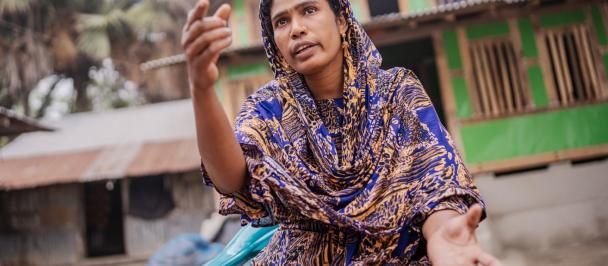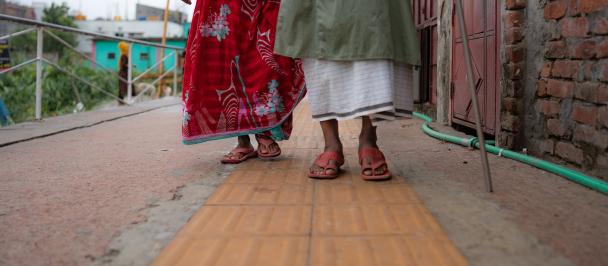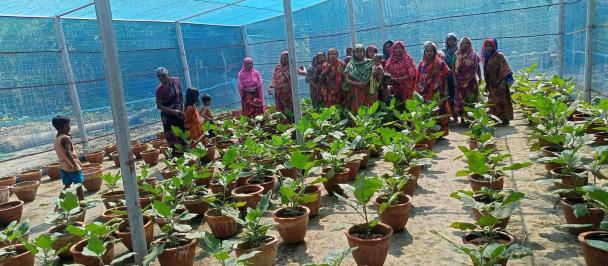Although the government had made tuition free for girls, the families struggled with additional expenditure like cost of uniforms, stationery, extra coaching to maintain their education. So, by the time the children finished primary school, most were pulled out.
Education Grant for Underprivileged Girls: A Beacon of Hope
October 11, 2022
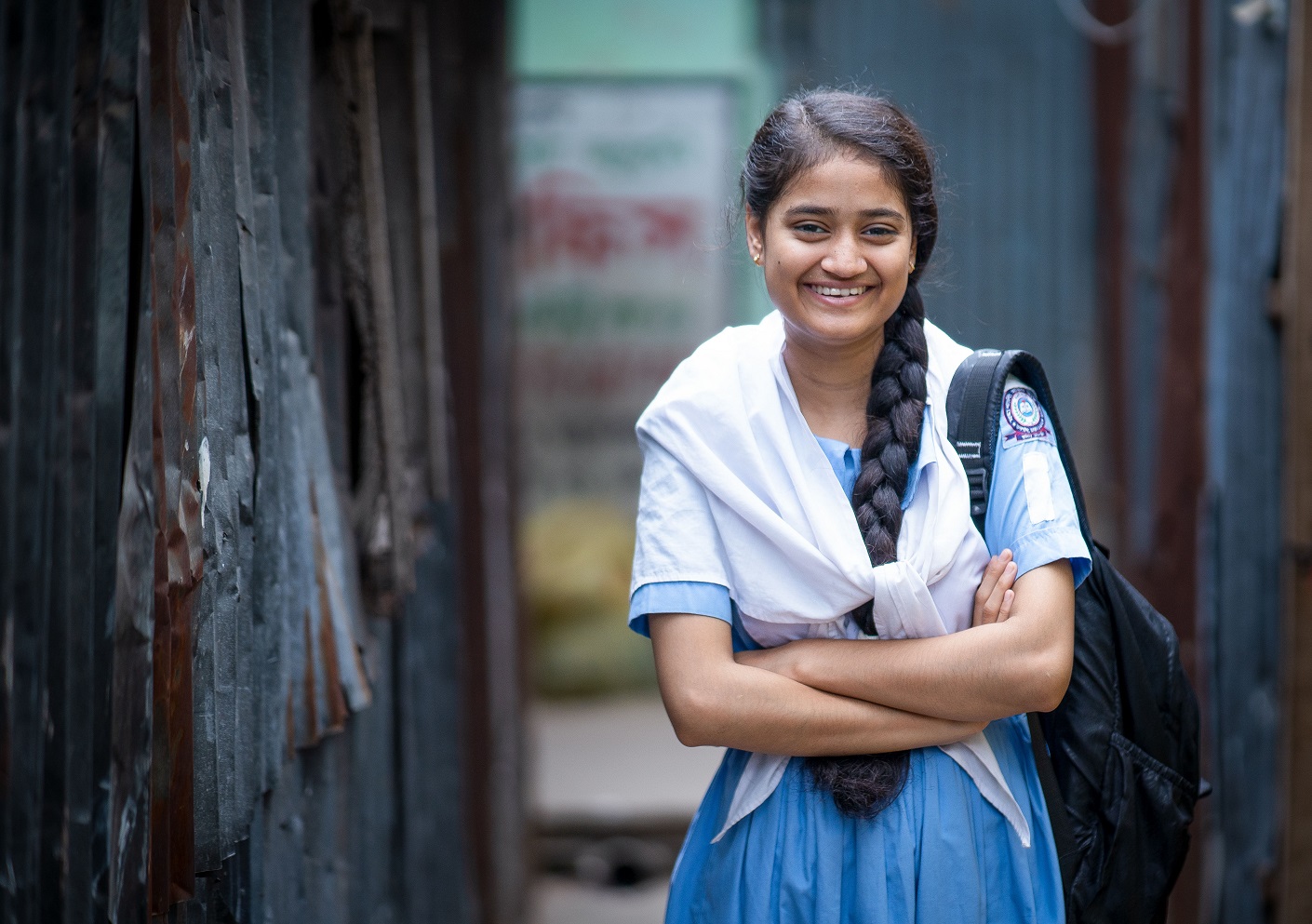
©UNDP Bangladesh
“I never thought I would be able to continue school,” Bithi Akhter, a 15-year-old resident of Korail slum, told with teary eyes.
“My parents would tell me; you are a girl. Why should we waste money on your education?” she continued adding that her family, due to her gender, preferred to keep her home until she came of age to start working in Readymade Garments Factory.
Not only Bithi, but many of the girls in Korail faced the same future. With families of four to five meeting days end on an average monthly earning of Tk 25,000 ($247), education for children, especially a girl child, seemed unworthy. Due to lack of incentive, instead of education, they were faced with strenuous work or early marriage.
Although the government had made tuition free for girls, the families struggled with additional expenditure like cost of uniforms, stationery, extra coaching to maintain their education. So, by the time the children finished primary school, most were pulled out.
“I was in class six at that time. It was 2018. My parents suddenly told me that there was no need for me to go to school from next year. I remember what they told me: stay at home until you are of age to go and work at the [Readymade] Garments Factory. That would be better for us,” she continued.
A year later, fortune struck for Bithi. A development project working for bettering the lives of the urban poor, was providing education grants. Bithi and many of her friends, who were at risk of dropping out, were selected as beneficiaries.
The Livelihood Improvement of Urban Poor Communities (LIUPC) Project of United Nations Development Programme and Local Government Division aims to contribute to balanced and sustainable growth by reducing urban poverty in Bangladesh and achievements of the Sustainable Development Goals by 2030.
Morsheda Akhter, a community organizer of LIUPCP, said, “We search out underprivileged families of the slum and give their children educational grants and other support to help them continue their study.”
“Previously the school dropout rate was very high in Korail slum. But in the changed scenario, most of the parent have been sending their children to schools,” she added that the grant has served as an incentive for the parents to allow the children to continue studies.
Since receiving the grant, Bithi has come a long way from sitting at home, waiting to come of age to go and work. A student of class 10 at Mohakhali Model School, Bithi had a twinkle in her eye as she talked about how she envisions her future.
“I love accounting. I am going to work in a bank and support my family. I know I have the potential; I am good at it. Now I can prove it to others,” she said.
Bithi’s story has not only inspired her parents to send her younger siblings to school but also other young girls in her community who sincerely attend school every day through the help of the grant and look to build a bright future for themselves in the face of looming adversity.
The shimmering light in Bithi’s eyes as she talked about her life in school and the future she sees for herself are among the brightest of evidence for the success of the education grant initiative under LIUPCP, which is not only strengthening community organization through empowering the at-risk youth but is also playing a crucial role in developing skills and employment for women and girls.
The project was designed to reach first the underserved urban population in the country and promote the livelihoods and living conditions of about four million people living in urban areas in 12 city corporations and 24 municipalities

 Locations
Locations